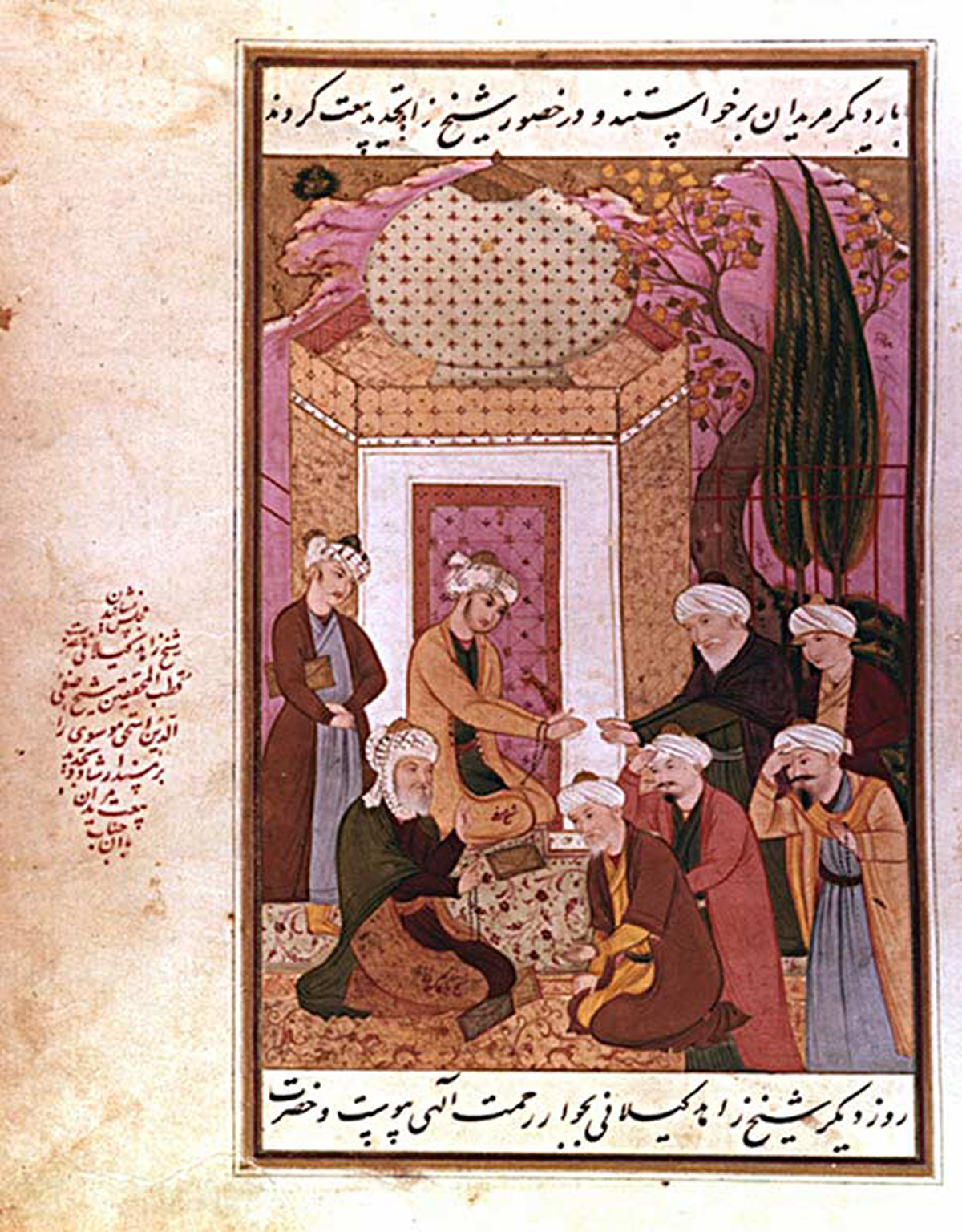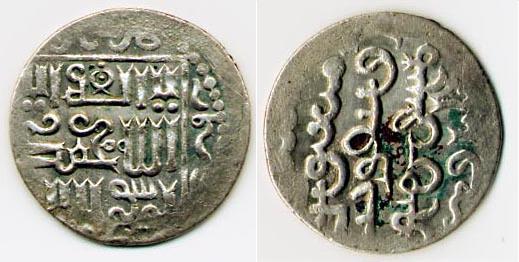|
Coban (Chobanids)
Amir Chūpān ( fa, امیر چوپان; died November 1327), also spelt Choban or Coban, was a Chupanid noble of the Ilkhanate, and nominal general of the Mongol Empire. He was ennobled by Emperor Taiding of Yuan as Duke of Yi (翊國公). Background Chupan's father Malek participated in Siege of Baghdad while his uncle Akrunchi participated in a campaign in Georgia in 1318. His grandfather was Tudaun from the Suldus clan and was directly descended from Chilaun, who was one of Chingis Khan's four great companions. Tudaun accompanied Hulagu on his campaign against Golden Horde in 1262 and named as governor of Diyar Bakr, died in 1277 at the Battle of Elbistan. Early career He participated in a battle against Nogai of Golden Horde in 1289 during his 20s. Amir Chupan was mentioned as a supporter of Gaykhatu during the latter's successful campaign for the Ilkhanid throne. During Ghazan's fight with Baydu for the throne in 1295, Chupan met with him near the Ustunavand castle ... [...More Info...] [...Related Items...] OR: [Wikipedia] [Google] [Baidu] |
Herat
Herāt (; Persian: ) is an oasis city and the third-largest city of Afghanistan. In 2020, it had an estimated population of 574,276, and serves as the capital of Herat Province, situated south of the Paropamisus Mountains (''Selseleh-ye Safēd Kōh'') in the fertile valley of the Hari River in the western part of the country. An ancient civilization on the Silk Road between the Middle East, Central and South Asia, it serves as a regional hub in the country's west. Herat dates back to Avestan times and was traditionally known for its wine. The city has a number of historic sites, including the Herat Citadel and the Musalla Complex. During the Middle Ages Herat became one of the important cities of Khorasan, as it was known as the ''Pearl of Khorasan''. After the conquest of Tamerlane, the city became an important center of intellectual and artistic life in the Islamic world. Under the rule of Shah Rukh the city served as the focal point of the Timurid Renaissance, whose glor ... [...More Info...] [...Related Items...] OR: [Wikipedia] [Google] [Baidu] |
Nogai Khan
Nogai, or Noğay (; also spelled Nogay, Nogaj, Nohai, Nokhai, Noqai, Ngoche, Noche, Kara Nokhai, and Isa Nogai; died 1299/1300) was a general and kingmaker of the Golden Horde and a great-great-grandson of Genghis Khan. His grandfather was Bo'al/Baul/Teval, the seventh son of Jochi. Nogai was also a notable convert to Islam. Though he never formally ruled the Golden Horde himself, he was effectively the co-ruler of the state alongside whatever khan was in power at the time and had unrestricted control over the portions west of the Dnieper. At his height, Nogai was one of the most powerful men in Europe and widely thought of as the Horde's true head. The Russian chroniclers gave him the title of tsar, and the Franciscan missionaries in the Crimea spoke of him as a co-emperor. Name French historian Paul Pelliot wrote that Nokhai meant "dog". Although in the Mongolian language, "nokhoi" (in Mongolian script: , ''nokhai'') literally means a "dog", it does not necessarily mean a parti ... [...More Info...] [...Related Items...] OR: [Wikipedia] [Google] [Baidu] |
Zahed Gilani
Taj Al-Din Ebrahim ibn Rushan Amir Al-Kurdi Al-Sanjani (or Sinjani; Persian:تاج الدين ابراهيم كردی سنجانی) (1218 – 1301), titled Sheikh Zahed (or Zahid) Gilani, was an Iranian Grandmaster (murshid-i kamil) of the famed Zahediyeh Sufi order at Lahijan. He is also known as '' Sultân-ûl Khalwatiyya Abdülbaki Gölpınarlı, Türkiye'de Mezhepler ve Tarikâtlar ''(Madh'habs and Tariqat in Turkey)'', İnkılâp Yayınevi, 1997. and Tadj’ad-Dīn Ebraheem Zāheed al-Geylānī'' as well. According to Minorsky and Elwell-Sutton at the '' Encyclopaedia of Islam'', the tomb of Sheikh Zahed is situated a few miles to the south of the town of Lankaran. Life Since the mid-13th century, Sheikh Zahed has been revered as a spiritual authority and his tomb near Lahijan in Iran's Gilan Province, on the shores of the Caspian Sea, draws numerous pilgrims to the village of ''Sheikhanvar''. His ancestors came from the ancient Iranian city of Sanjan in Khora ... [...More Info...] [...Related Items...] OR: [Wikipedia] [Google] [Baidu] |
Battle Of Marj Al-Saffar (1303)
The Battle of Marj al-Saffar (or Marj al-Suffar), also known as the Battle of Shaqhab, took place on April 20 through April 22, 1303 between the Mamluks and the Mongols and their Armenians, Armenian allies near Kiswe, Syria, just south of Damascus. The battle has been influential in both Islamic history and contemporary time because of the controversial jihad against other Muslims and Ramadan related fatwas issued by Ibn Taymiyyah, who himself joined the battle. The battle, a disastrous defeat for the Mongols, put an end to Mongol invasions of the Levant. Previous Mongol-Muslim conflict A string of Mongol victories, starting in 1218 when they had invaded Khwarezm, quickly gave the Mongols control over most of Persia as well as the Abbasid dynasty, Abbasid Dynasty of Iraq, Seljuk Sultanate of Rum of Asia Minor. Incorporating troops from vassal countries such as Cilician Armenia and the Kingdom of Georgia, the Mongols had Siege of Baghdad (1258), sacked Baghdad in 1258, followed ... [...More Info...] [...Related Items...] OR: [Wikipedia] [Google] [Baidu] |
Kutlushah
Kutlushah, Kutlusha or Qutlughshah (, , or Cotlesse in Frank sources), was a general under the Mongol Ilkhanate ruler Ghazan at the end the 13th century. He was particularly active in the Christian country of Georgia and especially during the Mongol invasion of Syria, until his ignominious defeat in 1303 led to his banishment. He was killed during the conquest of Gilan in 1307. Early life Kutlushah was a member of the Manghud tribe. His father Mangghudai Noyan was one of leading generals of Kublai, whose grandfather Jedei Noyan was Genghis Khan's mingghan commander. His uncle Hulqutu Qurchi was also a major ''keshig'' emir of Hulagu and Abaqa. He had two or three brothers who have died before his rise to prominence. Amir Timur Buqa was one of his brothers who commanded a mingghan. Nawruz's rebellion He served Abaqa as his commander and became a companion of then prince Ghazan in Khorasan when the prince was still a teenager after Nawruz's rebellion. However, he couldn't invo ... [...More Info...] [...Related Items...] OR: [Wikipedia] [Google] [Baidu] |
Mamelukes
Mamluk ( ar, مملوك, mamlūk (singular), , ''mamālīk'' (plural), translated as "one who is owned", meaning "slave", also transliterated as ''Mameluke'', ''mamluq'', ''mamluke'', ''mameluk'', ''mameluke'', ''mamaluke'', or ''marmeluke'') is a term most commonly referring to non-Arab, ethnically diverse (mostly Southern Russian, Turkic, Caucasian, Eastern and Southeastern European) slave-soldiers and freed slaves who were assigned military and administrative duties, serving the ruling Arab dynasties in the Muslim world. The most enduring Mamluk realm was the knightly military class in Egypt in the Middle Ages, which developed from the ranks of slave-soldiers. Originally the Mamluks were slaves of Turkic origin from the Eurasian Steppe, but the institution of military slavery spread to include Circassians, Abkhazians, Georgians,"Relations of the Georgian Mamluks of Egypt with Their Homeland in the Last Decades of the Eighteenth Century". Daniel Crecelius and Gotcha Djapari ... [...More Info...] [...Related Items...] OR: [Wikipedia] [Google] [Baidu] |
Syria
Syria ( ar, سُورِيَا or سُورِيَة, translit=Sūriyā), officially the Syrian Arab Republic ( ar, الجمهورية العربية السورية, al-Jumhūrīyah al-ʻArabīyah as-Sūrīyah), is a Western Asian country located in the Eastern Mediterranean and the Levant. It is a unitary republic that consists of 14 governorates (subdivisions), and is bordered by the Mediterranean Sea to the west, Turkey to the north, Iraq to the east and southeast, Jordan to the south, and Israel and Lebanon to the southwest. Cyprus lies to the west across the Mediterranean Sea. A country of fertile plains, high mountains, and deserts, Syria is home to diverse ethnic and religious groups, including the majority Syrian Arabs, Kurds, Turkmens, Assyrians, Armenians, Circassians, Albanians, and Greeks. Religious groups include Muslims, Christians, Alawites, Druze, and Yazidis. The capital and largest city of Syria is Damascus. Arabs are the largest ethnic group, and Mu ... [...More Info...] [...Related Items...] OR: [Wikipedia] [Google] [Baidu] |
Anatolia
Anatolia, tr, Anadolu Yarımadası), and the Anatolian plateau, also known as Asia Minor, is a large peninsula in Western Asia and the westernmost protrusion of the Asian continent. It constitutes the major part of modern-day Turkey. The region is bounded by the Turkish Straits to the northwest, the Black Sea to the north, the Armenian Highlands to the east, the Mediterranean Sea to the south, and the Aegean Sea to the west. The Sea of Marmara forms a connection between the Black and Aegean seas through the Bosporus and Dardanelles straits and separates Anatolia from Thrace on the Balkan peninsula of Southeast Europe. The eastern border of Anatolia has been held to be a line between the Gulf of Alexandretta and the Black Sea, bounded by the Armenian Highlands to the east and Mesopotamia to the southeast. By this definition Anatolia comprises approximately the western two-thirds of the Asian part of Turkey. Today, Anatolia is sometimes considered to be synonymous with Asian ... [...More Info...] [...Related Items...] OR: [Wikipedia] [Google] [Baidu] |
Oirats
Oirats ( mn, Ойрад, ''Oirad'', or , Oird; xal-RU, Өөрд; zh, 瓦剌; in the past, also Eleuths) are the westernmost group of the Mongols whose ancestral home is in the Altai region of Siberia, Xinjiang and western Mongolia. Historically, the Oirats were composed of four major tribes: Dzungar (Choros or Olots), Torghut, Dörbet and Khoshut. The minor tribes include: Khoid, Bayads, Myangad, Zakhchin, Baatud. The modern Kalmyks of Kalmykia on the Caspian Sea in southeastern Europe are Oirats. Etymology The name derives from Mongolic ''oi'' ("forest, woods") and ''ard'' < *''harad'' ("people"),M.Sanjdorj, History of the Mongolian People's Republic, Volume I, 1966 and they were counted among the "" in the 13th century. Similar to that is the Turkic ''aghach ari'' ("woodman") that is found as a place name in many locale ... [...More Info...] [...Related Items...] OR: [Wikipedia] [Google] [Baidu] |
Baydu
Baydu (Mongolian script:; ) (died 1295) was the sixth ruler of the Mongol empire's Ilkhanate division in Iran. He was the son of Taraqai, who was in turn the fifth son of Hulagu Khan.Stevens, John. ''The history of Persia. Containing, the lives and memorable actions of its kings from the first erecting of that monarchy to this time; an exact Description of all its Dominions; a curious Account of India, China, Tartary, Kermon, Arabia, Nixabur, and the Islands of Ceylon and Timor; as also of all Cities occasionally mention'd, as Schiras, Samarkand, Bokara, &c. Manners and Customs of those People, Persian Worshippers of Fire; Plants, Beasts, Product, and Trade. With many instructive and pleasant digressions, being remarkable Stories or Passages, occasionally occurring, as Strange Burials; Burning of the Dead; Liquors of several Countries; Hunting; Fishing; Practice of Physick; famous Physicians in the East; Actions of Tamerlan, &c. To which is added, an abridgment of the lives of the ki ... [...More Info...] [...Related Items...] OR: [Wikipedia] [Google] [Baidu] |

.jpeg/1200px-Bataille_du_Terek_(1262).jpeg)




